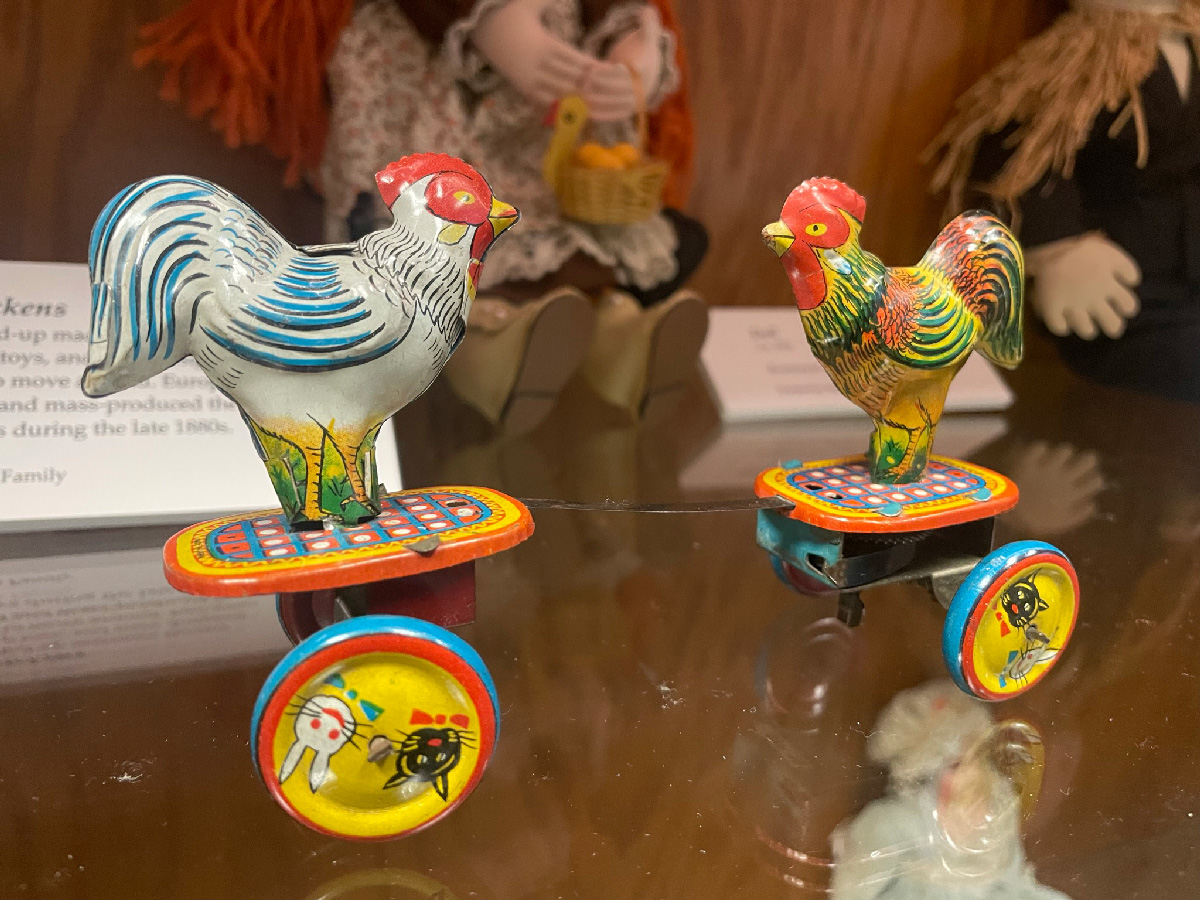
Written by Meghan E. Gattignolo
Even if you are a regular library patron, you may not have noticed the small exhibit case upstairs near the Brown Harvey, Sr. Genealogy Room.
This case is tended by the Customs House Museum & Cultural Center and features real pieces from the Museum’s permanent collection. Currently, the exhibit consists of a variety of toys from different decades. Here are just a few examples of what you can see up close.
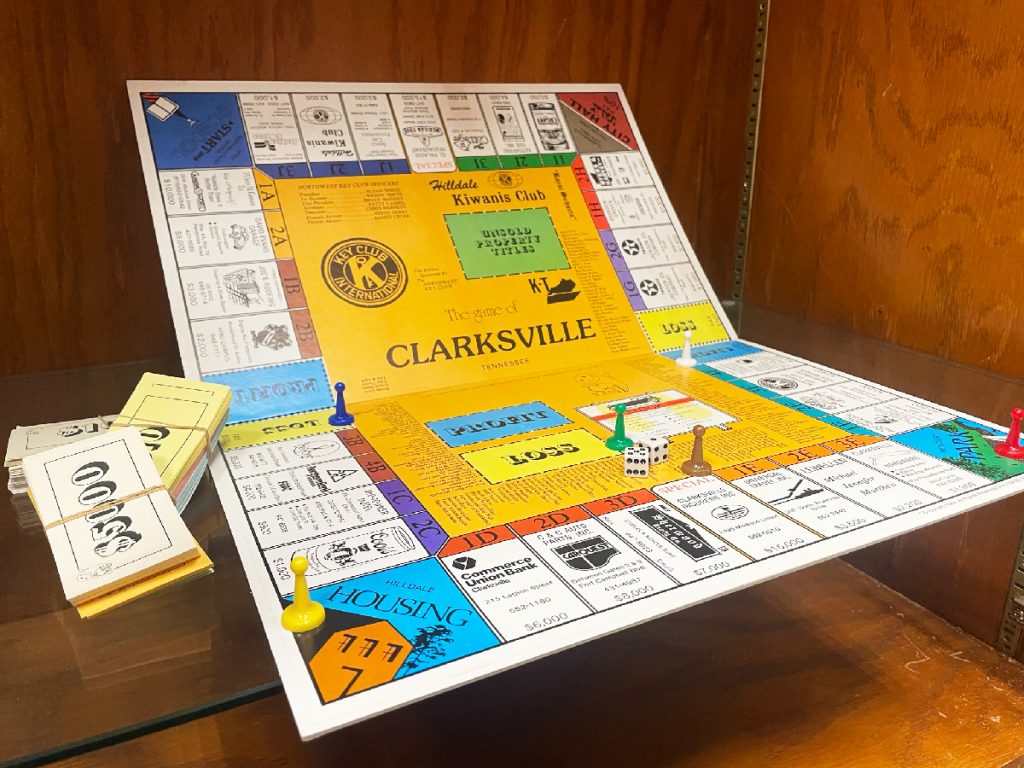
Board Game
People have played games together for a long, long time. Chess, invented in India in the 6th century, is certainly the board game most people think about when they think of ancient games, but Egyptians were playing Senet at least as far back as 3100 BCE. Monopoly became one of America’s all-time favorite board games when it was distributed by Parker Brothers in 1935 – the middle of the Great Depression, a time when the average person needed a distraction. The game featured here, The Game of Clarksville, looks like a precursor of today’s Clarksville-Opoly. It was produced by a company called G & J Ideas and sponsored by the Key and Kiwanis Clubs. The spaces on the board are a fun snapshot of the local business landscape of Clarksville in the early 1980s.
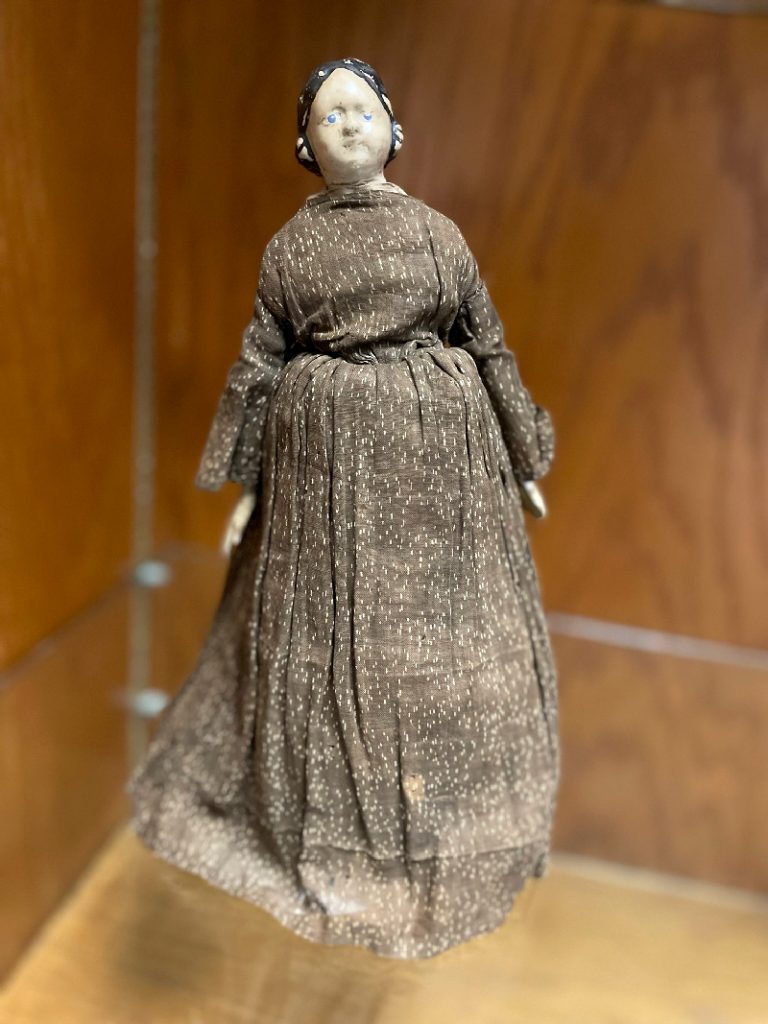
Wooden Doll
The Museum has many vintage dolls in the collection, as you might remember from this post last October. Dolls have existed in one form or another since the beginning of civilization. Before the commercialization of toys, children often made their own dolls out of materials they could get their hands on. If her family was wealthy, a girl might be gifted a porcelain doll with a painted face and tailored dress that matched her own. Wooden dolls were more accessible. Observing the hairstyle and dress of the wooden doll on display here hints at how the little girl who owned it might have dressed.
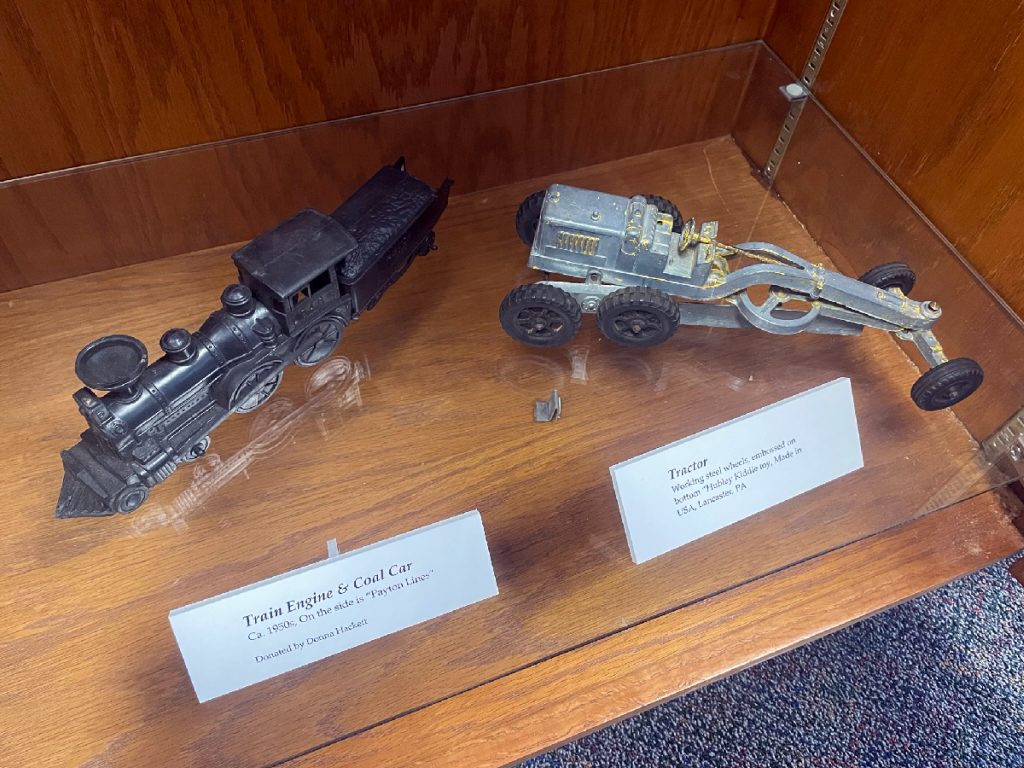
Metal Tractor
The metal tractor toy on display is more specifically a road grader. Underneath, a blade flips out and extends on either side of the toy, meant for smoothing out a new road. Road graders today are even more tractor-like, but the similarities are still present. As apparent from the flecks of paint that remain, the toy used to be painted a bright yellow. The toy road grader was produced by Hubley Manufacturing Company, known for its cast iron toys. During the mid-20th century, they made a wide range of realistic metal vehicle toys, from corvettes to fighter planes.
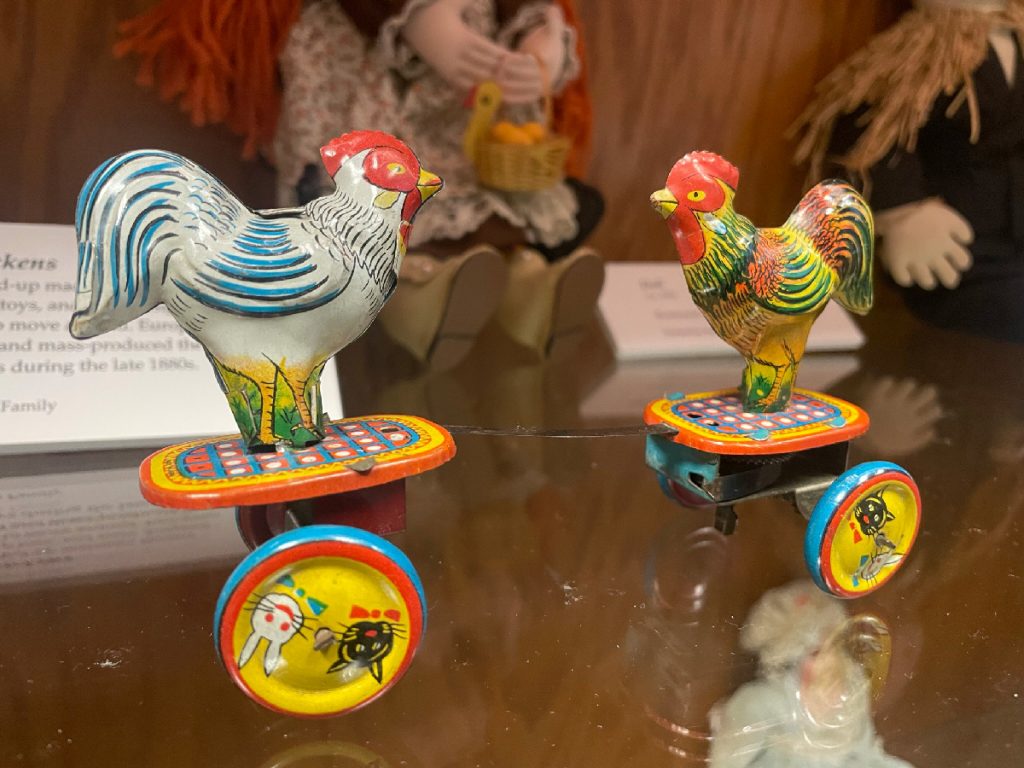
Tin Wind-up Toys
Before plastics were widely used for toys, tin or wood were often the materials of choice for commercial toys. Mechanical wind-up toys were popular in the United States from the late 19th century through the 1950s. The second half of the 20th century saw plastics replace other materials for commercial toys as they were cheaper and easier to produce. These roosters represent the last decade of tin toy popularity, made in Japan in the 1950s. They were designed to roll back and forth, like a tug of war, with the metal ribbon in the middle making them bounce back and forth as if they were pecking at each other.
Enjoy this hidden gem of an exhibit next time you visit the Clarksville-Montgomery County Public Library. Kids can enjoy imagining how their toys compare to those of previous generations, while adults can appreciate the novelty of an old toy. Then, come by and see what else is on exhibit at the Customs House Museum & Cultural Center!

Meghan E. Gattignolo is a freelance writer and longtime Clarksville, TN resident. She loves to obsess about historical subjects and annoy her family daily with unsolicited random facts. Meghan holds a History B.A. from Austin Peay State University and lives in town with her husband and two daughters.